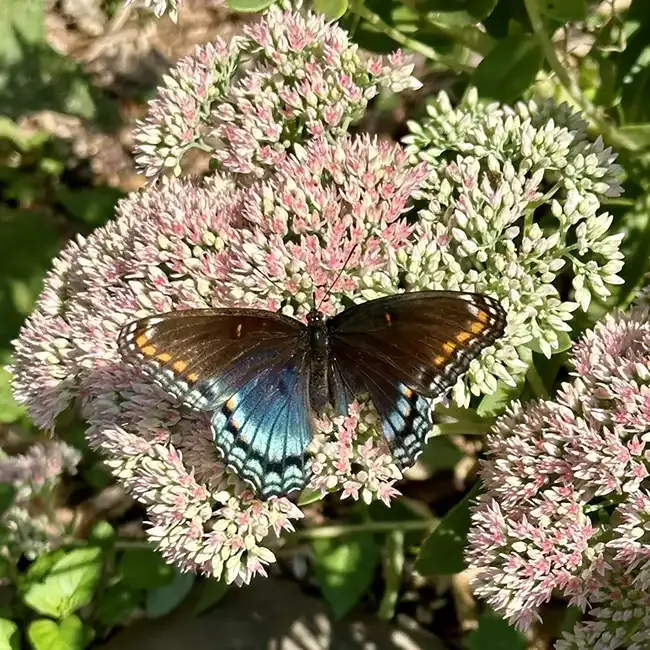
Sedum, commonly known as stonecrop, is a popular perennial plant that offers a stunning late-season display of flowers, making it a valuable addition to gardens aiming to support pollinators. Known for its hardiness, resilience, and drought tolerance, sedum thrives in various conditions, providing a splash of color in fall gardens when many other plants have finished blooming. Its succulent-like foliage and clusters of star-shaped flowers create a striking aesthetic that appeals not only to gardeners but also to bees, butterflies, and other pollinators.
Pollinator Attractor and Late-Season Bloomer
Sedum is an excellent plant for attracting pollinators. Its flowers, which bloom from late summer into early fall, provide a critical source of nectar and pollen for bees, butterflies, and other pollinating insects when many other flowering plants have faded. This makes sedum especially valuable for maintaining a healthy pollinator ecosystem throughout the growing season. The dense clusters of tiny, star-shaped flowers in shades of pink, red, yellow, and white are irresistible to pollinators, ensuring that your garden remains a buzzing hub of activity well into the cooler months.
Perennial and Minimum USDA Zone
As a perennial, sedum returns year after year with minimal care. Its fleshy, drought-tolerant leaves allow it to store water, making it well-suited for hot, dry conditions. Sedum is typically hardy in USDA zones 3 through 9, depending on the variety, meaning it can withstand cold temperatures and even occasional frosts in many regions. This wide hardiness range ensures that sedum can thrive in various climates, from the colder northern states to the warmer southern regions of the United States.
Growing Tips for Sedum
To grow sedum successfully, follow these tips to ensure healthy plants and a vibrant garden:
- Soil and Location: Sedum prefers well-drained soil and thrives in poor, sandy, or rocky soils where other plants might struggle. Avoid heavy, clay soils that retain water, as sedum's succulent nature makes it susceptible to root rot in overly wet conditions. Plant sedum in a sunny location, as it needs full sun (at least six hours per day) to perform best.
- Watering: Once established, sedum is highly drought-tolerant and requires minimal watering. Water young plants regularly until they are established, but after that, let the soil dry out between watering sessions. Avoid overwatering, especially in cooler months.
- Spacing: Sedum spreads easily, so give it adequate space when planting. Depending on the variety, space plants 6-12 inches apart to prevent overcrowding and ensure proper air circulation, which helps avoid fungal issues.
- Fertilizing: Sedum typically does not require much fertilization. In fact, overly rich soil can make the plants leggy and weak. A light application of a balanced fertilizer in the spring can promote growth, but generally, sedum thrives on neglect.
- Pruning and Maintenance: Deadheading spent flowers can encourage a tidier appearance, but sedum generally requires little pruning. After the flowers have finished blooming, you can cut back the stems to the ground in late fall or early spring to promote fresh growth.
- Dividing: Every few years, sedum plants may need dividing to prevent overcrowding and ensure vigorous growth. This can be done in spring or fall by carefully lifting the plant, dividing the root ball, and replanting in new locations.
Sedum is an exceptional perennial that offers a reliable, low-maintenance option for gardeners looking to extend their bloom season into late summer and early fall. Its pollinator-friendly flowers and ability to thrive in a range of conditions make it a versatile and valuable addition to any garden. Whether you're looking to fill a sunny border, create a drought-tolerant landscape, or simply attract more bees and butterflies, sedum is an excellent choice.
